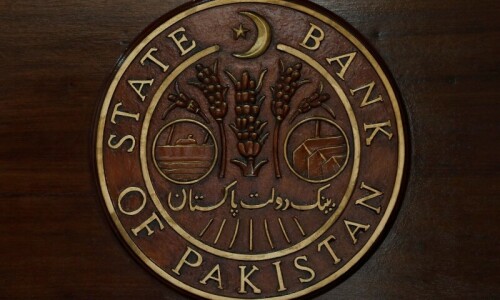• Rs200bn for power
• Rs150bn for gas
• Rs400bn for DLTL scheme
• Rs200bn for credit
ISLAMABAD: The government is set to unveil an ambitious Textile and Apparel Policy 2020-25 laden with cash subsidies and lower rates on utilities worth Rs960 billion to boost production and exports of value-added textile products.
The proposed policy, which will be the third such policy, estimates three scenarios that the measures will lift the textile and clothing exports to a minimum of $15.7bn and a maximum of $20.8bn by end of the year 2025.
Well-placed sources told Dawn that the Federal Board of Revenue (FBR) has sought one week’s time to analyse the revenue implications of the proposed measures under the policy. One of the major recommendations of the textile division is the restoration of the zero-rated regime for the five export-oriented sectors. The facility was withdrawn in the year 2019.
The FBR will take up the issue of zero-rated regime revival with the International Monetary Fund,” the sources said, adding the stakeholders also want its revival to cope with the impact of Covid-19.
The FBR has claimed to have processed the highest-ever refunds of the industry. In the last two years, the government paid Rs97bn in pending liabilities of previous governments, while the previous two governments only paid Rs68bn.
The policy is laden with measures to tackle issues confronting the textile sector amid Covid-19 that has resulted in supply chain disruptions, affected global prices of commodities hitting trade adversely, while also addressing the issues of the withdrawal of SRO-1125 and cost of doing business.
Furthermore, the policy should attract domestic and foreign investment in the textiles value chain and the development of value-added sectors, with a prime focus on small and medium enterprises (SMEs). However, the incentives only focus on reducing the cost of doing business in existing industries and no specific link is proposed to either enhance exports or expand production lines.
The past policies only subsidised export proceeds instead of widening the production line. Currently, the textile and clothing industries are operating at full capacity to meet buyers’ demands.
Under the policy, the government has proposed an amount of Rs200bn to subsidise electricity supply to the export sectors for the next five years. The electricity will be provided at cents 9/kWh. Similarly, an amount of Rs150bn will be allocated for providing gas at a concessionary rate to the industry.
The government will provide RLNG at $6.5/mmBtu and system gas at Rs786/mmBtu during the next five years. It has been proposed to allocate Rs400bn for payment of Drawback of Local Taxes and Levy (DLTL) scheme, which is simply a cash subsidy on exports proceeds from the country.
Currently, the government provide cash subsidy under the DLTL which was launched by the previous government.
It was also decided in principle that to bring no change in the existing Export Finance Scheme (EFS) and Long Term Financing Facility (LTFF) schemes. It is proposed to allocate an amount of Rs200bn to ensure short-term credit availability and long-term finance facility to exporters.
It is also under consideration to revive LTFF and refinance scheme for SMEs and indirect exporters. Textile machinery and spare parts, accessories, dyes, and chemicals will also be included in LTFF schemes of the State Bank of Pakistan.
Similarly, a brand development fund will be launched besides revitalising Pakistan Textile City Ltd (PTCL) and Karachi Garment City Ltd (KGCL). Special Economic Zone (SEZ) status will be granted to PTCL and KGCC as well.
International buying houses will be consulted to develop an incentive package to encourage them to open offices in Pakistan. The Ministry of Commerce will formulate an aggressive road map to get market access to developed and developing economies.
The mass level training programme will be launched specially for industrial stitching and mostly for women. Measures also proposed to promote marketing strategy.
The first-ever E-Commerce Policy is under implementation phase, and this will provide open access to textile manufacturers/exporter to tap available business opportunities across the globe. Amazon has already started registering Pakistani manufacturers and exporters including textiles.
The previous two Textile Policy 2009-14 and 2014-19 was formulated with the aim of enhancing exports to $25bn and $26bn, respectively. The targets set were ambitious and it could only remain on papers.
For achieving these targets, the financial commitment of Rs188bn for the first policy and Rs65bn for the second policy was made by the government. However, the commitments were not fulfilled, and timely payments were not doled out in the financial support schemes.
Published in Dawn, January 7th, 2021
















































